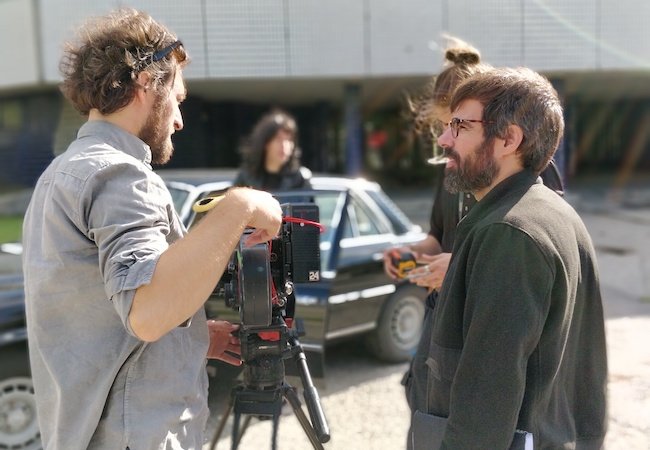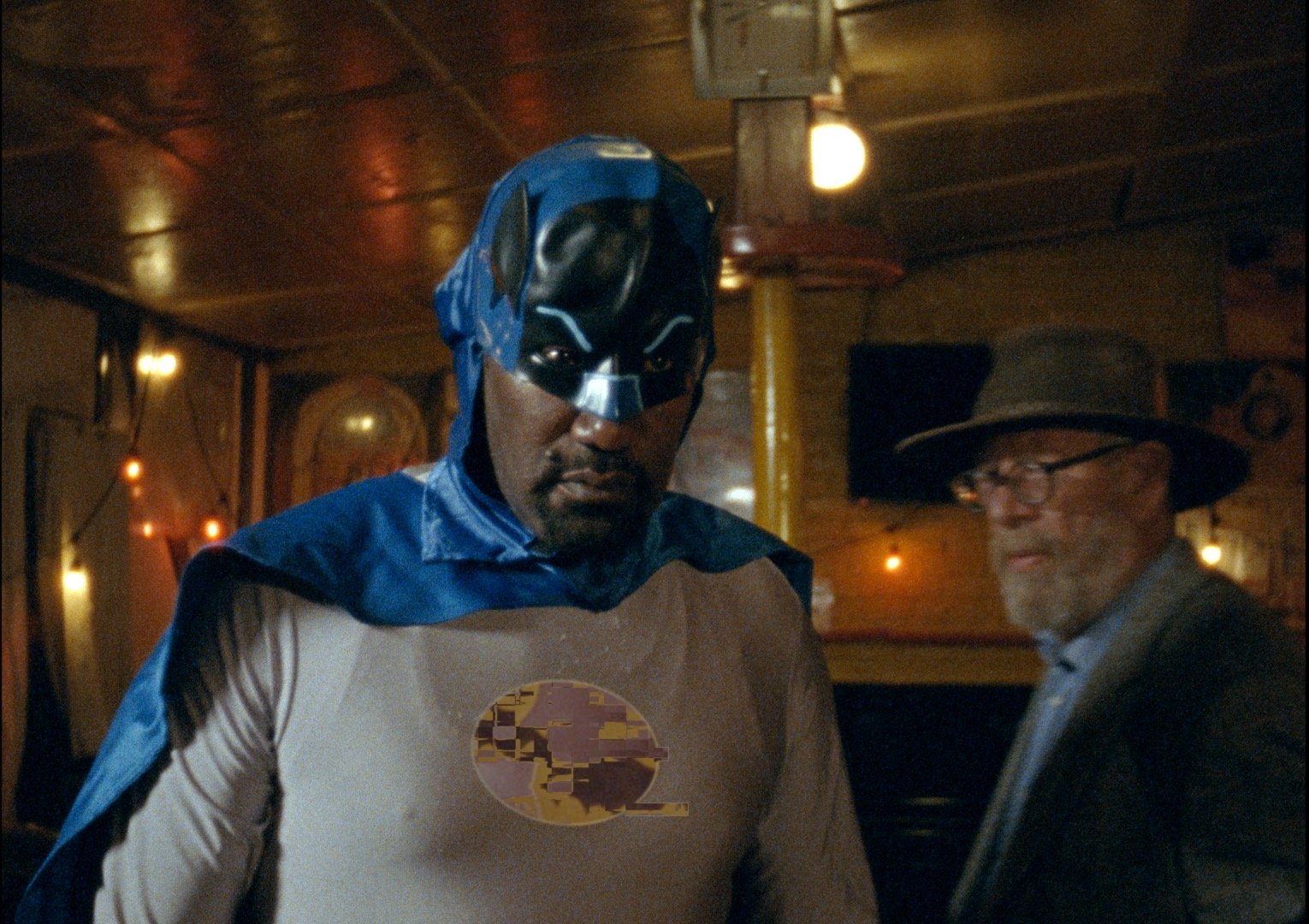
(Editor’s Note: Jesus Shows You the Way to the Highway is an action-comedy-mystery-fantasy about two CIA agents trying to stop a computer virus called Soviet Union. In the following piece, producer Sergio Uguet de Resayre explains how he got his high concept, low-ROI indie feature made)
When it comes to a medium like film, where there must be a balance between commerce and art, the industry is not keen on taking risks. And even though there is a call for more diverse storylines, roles, and characters, there are also limits. It’s common nowadays to use special software that will analyze the elements of a project and compare them with precedents in order to determine the viability and the likelihood of turning a profit. (Before we know it, A.I. will be writing scripts and actors will just be computer-generated avatars, but that’s a different story.)
Imagine you’re producing a film where your protagonist is a four-foot-tall Ethiopian with the talent of an A-lister, but who doesn’t speak English and has a physical deformity. Imagine that you’re mixing different formats to create a cartoonish pastiche with a sci-fi storyline that’s slightly too intellectual for mainstream media, and that the type of movie you’re making doesn’t have a precedent. You start pitching and soon realize that there’s little interest among your peers in making unconventional stories. Inclusion is great… as long as it has an immediate upside. If not, then it’s “too niche.” The biggest praise you might receive is on “your bravery,” an expression that industry people use to basically say you’re a naive kamikaze who’s likely to crash and burn.
However, as a producer, you need to ask yourself what type of films do you want to make? Will you be limited by a risk-averse industry that follows the laws of an algorithm and create films that feel manufactured? Or do you want to tell a story you’re passionate about and create something meaningful?
Personally, I don’t make cookie-cutter projects and I’m not obsessed with the ROI, partly because I strive to make evergreen films with a longer lifespan that will hopefully bring in recurring revenue in the long term. In an industry obsessed with short term gains, going this route can be lonely and frustrating, but it helps to keep in mind that films that have gone on to become trendsetters were made in the fringes until it became obvious that they were bankable—in turn, causing independent cinema to become mainstream.
Director Miguel Llansó and I have made our film, and it’s glorious. It’s called Jesus Shows You the Way to the Highway, and it’s everything we wanted and more. In fact, Variety’s Dennis Harvey wrote: “It is unquestionably not quite like anything else before it (excepting perhaps Crumbs), and that’s a virtue from which cult followings are born.”
Miguel and I have known each other since we were fourth-graders in Madrid, Spain. We grew up together, we played in a punk rock band together, and now we make films together. If you’re not building a community with your moviemaking friends, your career won’t go very far. You also want your collaborators to hype up your film, and that will only happen if they feel emotionally invested in it.
Prior to making Jesus Shows You the Way to the Highway, we made a feature called Crumbs—an Ethiopian sci-fi love story that played close to 150 festivals and screenings, premiered in Rotterdam International Film Festival to critical acclaim, and went on to have a limited U.S. theatrical release. Not bad for a shoestring budget Amharic-language film.

MVPs of Development Don’t Play by Old Rules
During that time, I had also been getting acquainted with “growth hacking”—a strategy used by the tech industry that establishes the new rules of marketing. One key idea of growth hacking is to insert your film’s marketing into the development process and to release “MVPs” (minimum viable products) so that your final product will be shaped through the input of its audience. Hollywood has shifted to this mind-set, which is why projects need to be backed by intellectual property that has been successfully tested and validated in front of an audience. In other words, books, comics, news stories, YouTube series, etc. have all become Hollywood’s minimum viable products. In Europe, things are still different: There, the bureaucrats handing out the soft money are the ones who decide what gets made. On a macro level, Crumbs and Miguel’s previous short films were our MVPs, but the beauty of growth hacking is that the system can be scaled to every process—including the making of the film itself. This is how we tackled the production of Jesus Shows You the Way to the Highway.
If, like us, you’re relying on so many visual elements to tell your story, your biggest problem will be that your script and pitch deck will likely not do justice to what your final movie would look like. You have to show people your vision, and the only way of doing that is to shoot parts of the film. This made us aware that making Jesus Shows You the Way to the Highway would be a lengthy process with scarce resources.
You have to mentally prepare yourself for development so that you can roll through the rejections while working steadily toward your goals. We did it in three years, for under €500,000 ($550,975) and without needing to cashflow large sums of money. While our film was still a work in progress, we were able to secure our major premieres without much effort. We did all this by changing our mindset on how films are produced. The main idea became that we would develop a project as a small MVP that would help us shape the film as we made it. As long as we kept the cost of each stage low, we could minimize the risk since our plan B, if we failed, was to adapt whatever material we had into a sellable format, such as a short episodic digital series for online platforms.
This type of approach allows you to focus on producing the next leg of the production and not the entire thing, which makes things easier.
Also read: How Factory 25 Founder Matt Grady Survived a Near-Death Experience and Started Distributing Films
It also opens up new opportunities. After the completion of each leg, you can use what you have to raise the needed resources for the following stage, and so on, until you’re able to complete it. For our film the separation was easy, since Jesus Shows You the Way to the Highway is a sci-film that happens in different dimensions that have different textures (stop-motion, 16mm, video, etc.) and takes place in contrasting locations—so different that we shot in four countries. Imagine that: a shoestring budget mega-production of epic proportions. (If you’re going to be “brave,” be the bravest.)

Don’t Go Chasing Waterfalls
We made a series of decisions that set the foundation for our production. One was that we would accept either resources, financial backing, or both only as investments in equity and that we would stay away from waterfalls. We would commit our time and, if needed, our own money as equity. Money and the value of the resources, including labor, would have equal value in the equity of the film and therefore in the distribution of profits. This would incentivize small investments from a larger pool of people but also allow for collaborators to provide resources and services all while spreading out the risk.
Working the Crowd
In order for all this to work, you have to raise your project’s profile by creating notoriety while you’re making it. We defined several targets: the audience, journalists, festival programmers, sales agents, distributors, producers and collaborators, and film commissioners—especially those available in places where the story was set.
It’s useful to create stages for your film’s development phase and set milestones to continuously validate what you’re doing. For our first stage, we scraped up €3,000 ($3,300) to shoot some of the Ethiopian sequences so that we could cut it with the stop-motion sequence in order to create a teaser that would double as a proof of concept. We shot actual scenes from the script with the intention of using them. We released the teaser among our networks, through social media, YouTube, and Vimeo and tracked the reach of the concept. We also wanted to leverage the audience we had accumulated with Crumbs and the teaser in order to crowdfund the next step of production. We had a Kickstarter campaign with the low goal of €15,000 ($16,425), an amount we thought was reasonable and feasible. We also knew that the non- financial rewards from crowdfunding were almost as valuable as money. After all, if we didn’t reach our goal, we could have dropped the project entirely, as we would have not been able to justify an audience.
Also read: Beyond Birds of Prey: LuckyChap’s Fantabulous Future
Meet Market
As the evolving film industry leans into the growth hacking type of development, the independent film festival circuit and its development platforms have also become the breeding ground for mainstream media. These platforms, sponsored by film festivals, are the perfect place to see if your high-risk project sticks. There are many such platforms, but since we were making a sci-fi film, we applied to Frontières, a genre film market that bridges the American way of making films with the European way, and a venture between two major institutions in independent cinema—the Montreal-based Fantasia International Film Festival and Cannes Film Festival’s “Marché du Film.” By the time we applied, we had a tested proof of concept, cash in hand from the crowdfunding campaign, and a few articles and press references on the project, so our odds of getting invited were quite high. We got in.
Frontières proved there was festival interest in the project. But once inside, we needed industry professionals to validate the film. In order to properly shape the film, we needed their feedback… and that’s harder to get than it may seem.
We split these professionals into two categories: On the one hand, there are stable employees who look for content they can streamline. On the other hand, there are the mavericks who are always looking for the next big thing. We didn’t do well with people in the first category; their accolades for our “bravery” became redundant.
So, to earn the support of people in the second category, we went through connections made at Frontières. The market happens in two stages: First, you have the forum in a hotel somewhere in the world, and then, if you’re able to complete a proof of concept in time, you pitch in Cannes. We already had our proof of concept, so I pitched our film in Cannes. By then, our notoriety was quite high, which helped us secure some soft money from the Estonian Film Institute through our Estonian co-producer, Alasti Kino. From there, we used the money we crowdfunded to pay for the Ethiopian leg of the film and the Estonian money to pay for the Estonian leg of the film.
We found Mojo Raiser Productions from Latvia, who came aboard by servicing the Latvian leg of the film for equity. Andy Starke from Rook Films, a producer who had participated in our edition of Frontières with a different project, came aboard as executive producer and gave us some funding from his BFI corridor. Combined, this gave us all the resources needed to complete principal photography.
During Frontières, we met the team at Avanpost, a post-production house in Romania, and they agreed to give us post services in exchange for equity. Whenever we had a gap in our funding, it was so small that we could cover it ourselves and prevent the project from stalling.
And with that, my friends and I made Jesus Shows You the Way to the Highway—“The Matrix on acid,” a brave, low-budget epic that will grow as it finds an audience… or maybe not. We have a decade to find out.
Jesus Shows You the Way to the Highway has played the festival circuit in Canada, Finland, France, and Switzerland and had its U.S. premiere at the Chicago International Film Festival in October 2019.
